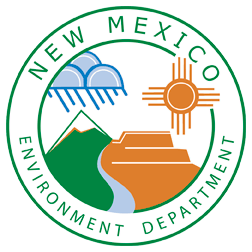How are PFAS regulated in New Mexico’s public drinking water?
The U.S. Environmental Protection Agency (EPA) announced the first-ever national drinking water standards for several PFAS in drinking water in 2024, and water systems have until 2029 to come into compliance with them.
The final rule establishes maximum contaminant levels (MCL) for two kinds of PFAS: PFOA, PFOS.
This new rule will significantly reduce the level of PFAS in drinking water across the United States. Many states including New Mexico, have worked to monitor for PFAS exposure in drinking water. This rule builds on these efforts by incorporating the latest science and establishing a nationwide, long-term, health-protective level for these specific PFAS in drinking water.
In New Mexico, 563 community water systems and 128 non-transient, non-community water systems will be required to comply with this new rule.
For more information about this final rule, visit the EPA’s Per- and Polyfluoroalkyl Substances (PFAS) rule summary page.
What is New Mexico doing?
NMED has taken proactive steps to begin evaluating PFAS impacts to public water supplies in New Mexico. As part of our efforts, NMED, in collaboration with the U.S. Geological Survey (USGS) sampled drinking water supplies across the state in 2020. This sampling effort has focused on multiple ground and surface water supplies across New Mexico.
Results from nearly 80 public water systems, as well as multiple surface water sampling locations, are available here.
Additionally, New Mexico public water systems are currently sampling for PFAS under the federal Fifth Unregulated Contaminant Monitoring Rule. Visit NMED’s Emerging Contaminants Program page for more information.
I use a private well. How can I test it for PFAS?
If you are on a private well, get your water tested at a certified lab. If you are on public water, check system reports for PFAS results.
If your results show you have PFAS in your private well water, NMED recommends you install a home filtration system. Such systems can reduce PFAS exposure. The Environmental Protection Agency has more information on how to select the right one for your home.
Other resources for private well owners include:
- Drinking Water Bureau – General Guidance for Owners of Private Wells – Link to a New Mexico Environment Department webpage with additional resources for private drinking water well owners.
- New Mexico Environmental Public Health Tracking – Private Wells – Link to a New Mexico Department of Health webpage with additional resources for private drinking water well owners.
- US Environmental Protection Agency – Private Drinking Water Wells – Link to a U.S. Environmental Protection Agency webpage with additional resources for private drinking water well owners.


